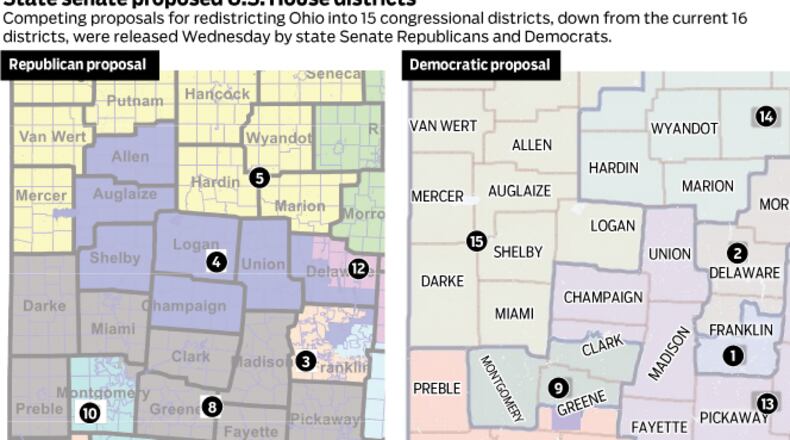The House Government Oversight Committee has scheduled for a third hearing on House Bill 479, the House Republican plan, on Wednesday morning.
Any insights they have gleaned from hours of public testimony will be handed off to the Joint Committee on Congressional Redistricting, which is scheduled to meet for the first time at 2:30 p.m. Wednesday. It will meet again at 10:30 a.m. Friday.
Committee testimony thus far has been repetitive, with many of the same people making similar statements. They further echoed their earlier comments before the Ohio Redistricting Commission on state House and Senate district maps, which the commission’s Republican members passed on a party-line vote.
In general, most speakers criticized the Republican maps for splitting urban counties and areas with large minority populations, attaching them to rural and overwhelmingly white areas to dilute their voting power and maintaining Republican control. Currently Republicans hold 12 of Ohio’s 16 U.S. House seats. The state will lose one of its seats per results of the 2020 census.
State legislators have until Nov. 30 to approve a new congressional district map.
If they can craft one that garners a three-fifths overall majority and support from one-third of Democrats, it will be valid for a decade. If not, they can accept a map by simple majority vote without bipartisan support, but it would have to be redone in four years.
State Sen. Theresa Gavarone, R-Bowling Green, chairs the Senate Local Government & Elections Committee. She said Tuesday that she didn’t know if her committee would hold a vote to recommend a map proposal to the joint committee.
The six-member joint committee includes four Republicans and two Democrats. Gavarone and Rep. Shane Wilkin, R-Hillsboro, are on the joint committee along with Senate Majority Whip Rob McColley, R-Napoleon, sponsor of the Senate Republican map; state Rep. Scott Oelslager, R-Canton, sponsor of the House Republican map; state Sen. Vernon Sykes, D-Akron, former co-chair of the Ohio Redistricting Commission and a co-sponsor of the Senate Democratic map; and state Rep. Beth Liston, D-Dublin.
Districts are commonly deemed “competitive” if they have a partisan split no greater than 55% to 45%, but a number of people testified that’s an unrealistic standard, saying divisions of perhaps 52% to 48% are generally needed to make races truly competitive.
Using the 55%/45% standard, the Senate Republican proposal would likely create five Republican, two Democratic and eight potentially competitive districts, according to McColley, its sponsor. A “good number” of the competitive districts would lean Democratic, he said.
The House Republican proposal would create eight Republican districts, two Democratic, and five up for grabs, again using the 55%/44% standard for competitiveness.
The Senate Democratic proposal would create seven Democratic-leaning and eight Republican-leaning seats.
The newly released House Democratic map would create six Republican, four Democratic and five competitive districts.
About the Author

